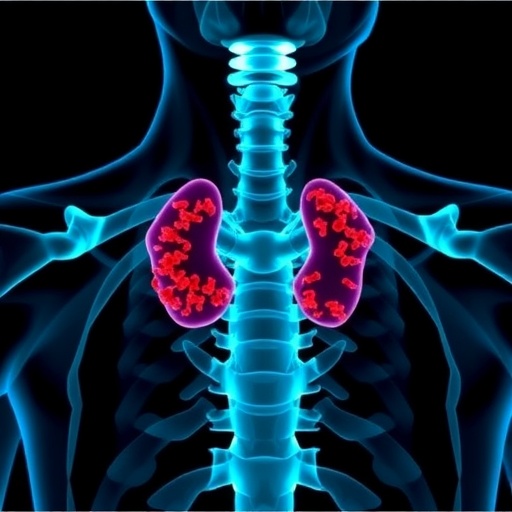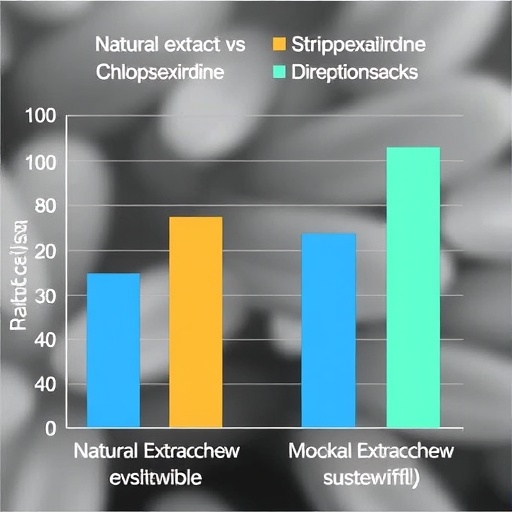In a groundbreaking study, researchers at a leading institution have proposed a novel interpretable multimodal machine learning model designed specifically to predict the malignancy of thyroid nodules, particularly in low-resource scenarios. This innovative approach addresses a crucial gap in the healthcare landscape, where access to advanced diagnostic tools is frequently limited. By harnessing a variety of data inputs, including imaging and patient history, the model aims to enhance decision-making processes in clinical settings where specialists may not be readily available.
Thyroid nodules are commonly encountered in clinical practice, with a significant percentage of the population affected by them. However, the challenge lies in accurately determining which nodules are benign and which have the potential to be malignant. Traditional diagnostic methods often require invasive procedures such as fine-needle aspiration biopsies, which may not only cause discomfort but also present risks in low-resource settings. The new multimodal model reduces reliance on these invasive techniques, promoting a more patient-friendly approach to thyroid nodule assessment.
The authors explain that by integrating various data sources, the model develops a comprehensive understanding of each patient’s unique situation. This includes clinical and demographic information, ultrasound imaging data, and even histopathological indicators. Each of these components is crucial, as they collectively contribute to the model’s capacity to differentiate between benign and malignant nodules. The integration of this data is not just a technical enhancement; it represents a paradigm shift in how we approach the diagnosis of thyroid cancer.
Central to the model’s success is its interpretable nature, which allows healthcare providers to understand the reasoning behind the predictions. This transparency is vital, especially when discussed in the clinical context. Physicians can engage with the information provided by the model to form a comprehensive overview of the patient’s condition, fostering trust and confidence in the diagnostic process. This aspect is particularly important given the high stakes involved in cancer diagnosis and management.
Machine learning algorithms often function as “black boxes,” generating predictions without clear explanations, leading to skepticism among healthcare professionals. By contrast, this new model clarifies its decision-making processes, potentially easing the fears of practitioners who are wary of incorporating artificial intelligence into their workflows. Understanding how a model arrives at a conclusion enables clinicians to make informed decisions as they consider treatment options for their patients.
During the study, the researchers evaluated the model’s performance using a sizable dataset of thyroid nodule cases that encompass diverse demographics and clinical scenarios. This comprehensive dataset served not only to train the model but also to ensure its robustness across varying contexts. The results were compelling; the model exhibited a high degree of accuracy in distinguishing malignant nodules from benign ones, suggesting that it could effectively triage cases before they reach more invasive stages of investigation.
As the study progressed, the researchers emphasized the model’s adaptability. It can be tailored to meet the specific requirements of different healthcare settings, particularly in under-resourced areas where personnel and infrastructure may not support conventional diagnostic practices. This adaptability means that the model can potentially be deployed in a multitude of environments, from bustling urban hospitals to remote clinics.
The implications of this research extend beyond just technical advancements. The ability to predict the malignancy of thyroid nodules with high accuracy presents a significant public health benefit, particularly in regions where patients experience delays in receiving critical care. By reducing the number of unnecessary biopsies and associated complications, the model not only helps in conserving valuable healthcare resources but also promotes patient well-being.
Moreover, the researchers highlighted that the model could significantly reduce healthcare costs, particularly in low-resource settings. By avoiding unnecessary procedures, patients would incur fewer medical expenses, and healthcare facilities would be able to allocate resources more effectively. This economic benefit is paramount in regions where funding for healthcare is limited, making it essential for providers to seek solutions that maximize efficiency and patient care quality.
The team’s findings have garnered significant attention, suggesting that this model could herald a new era in the management of thyroid conditions. As the healthcare community increasingly looks toward artificial intelligence and machine learning to solve pressing problems, this research exemplifies how technology can be harnessed for significant societal benefit. Indeed, the convergence of healthcare and technology is not merely an innovative trend; it represents a necessary evolution in our approach to medicine.
Looking ahead, the researchers are focusing on further validation of the model through real-world clinical trials. They believe that integrating feedback from practitioners will enhance its functionality and reliability even further. The willingness of the healthcare community to embrace these changes denotes a shift toward a future where AI-based tools are indispensable in improving patient outcomes and redefining standards of care.
As technology continues to advance at an unprecedented rate, this model represents just one of the many possibilities that lie ahead. The foundations laid by this study encourage ongoing exploration in the realm of artificial intelligence in healthcare, inspiring other researchers to pursue similar avenues for innovation. The impact of such studies will reverberate through time, potentially saving countless lives and reshaping the future of medical diagnostics.
In conclusion, this interpretable multimodal machine learning model underscores the power and potential of technology in enhancing healthcare delivery. By providing improved diagnostic capabilities for thyroid nodules, especially in low-resource scenarios, it paves the way for a more efficient, compassionate, and accessible health system. The journey to integrating artificial intelligence into everyday clinical practice has just begun, with significant promise ahead.
Subject of Research: Thyroid Nodule Malignancy Prediction
Article Title: An interpretable multimodal machine learning model for predicting malignancy of thyroid nodules in low-resource scenarios.
Article References:
Ma, F., Yu, F., Gu, X. et al. An interpretable multimodal machine learning model for predicting malignancy of thyroid nodules in low-resource scenarios.
BMC Endocr Disord 25, 232 (2025). https://doi.org/10.1186/s12902-025-02031-x
Image Credits: AI Generated
DOI: 10.1186/s12902-025-02031-x
Keywords: machine learning, thyroid nodules, malignancy prediction, low-resource settings, healthcare technology
Tags: advancements in thyroid nodule researchcomprehensive patient data analysisimproving clinical decision-making in endocrinologyintegration of clinical data in diagnosticsinterpretable AI for medical diagnosislow-resource healthcare solutionsmultimodal machine learning in healthcarenon-invasive thyroid assessment methodspatient-friendly approaches to nodule assessmentreducing reliance on invasive proceduresthyroid nodule malignancy predictionultrasound imaging in thyroid evaluation





